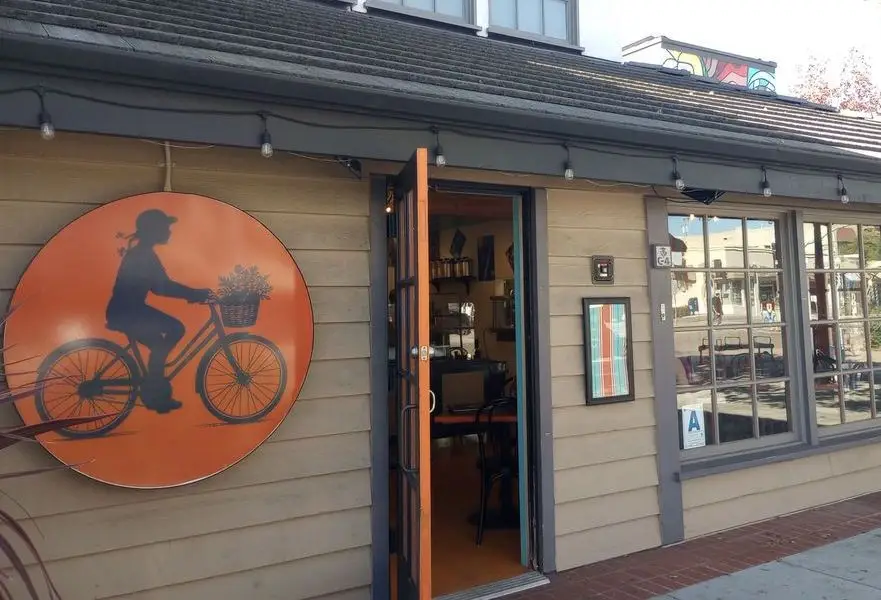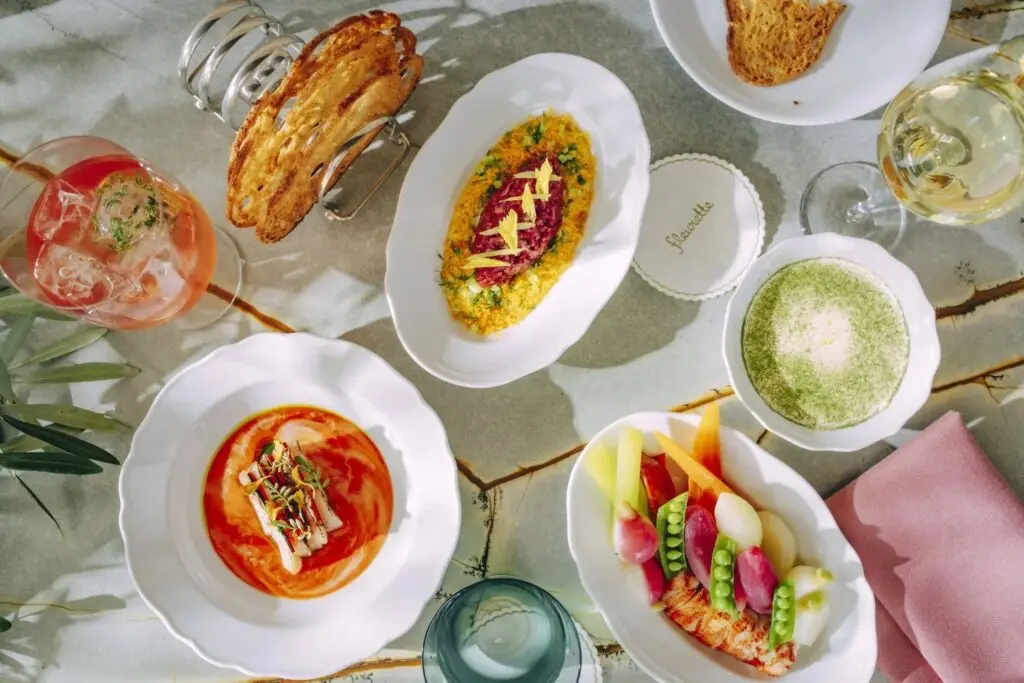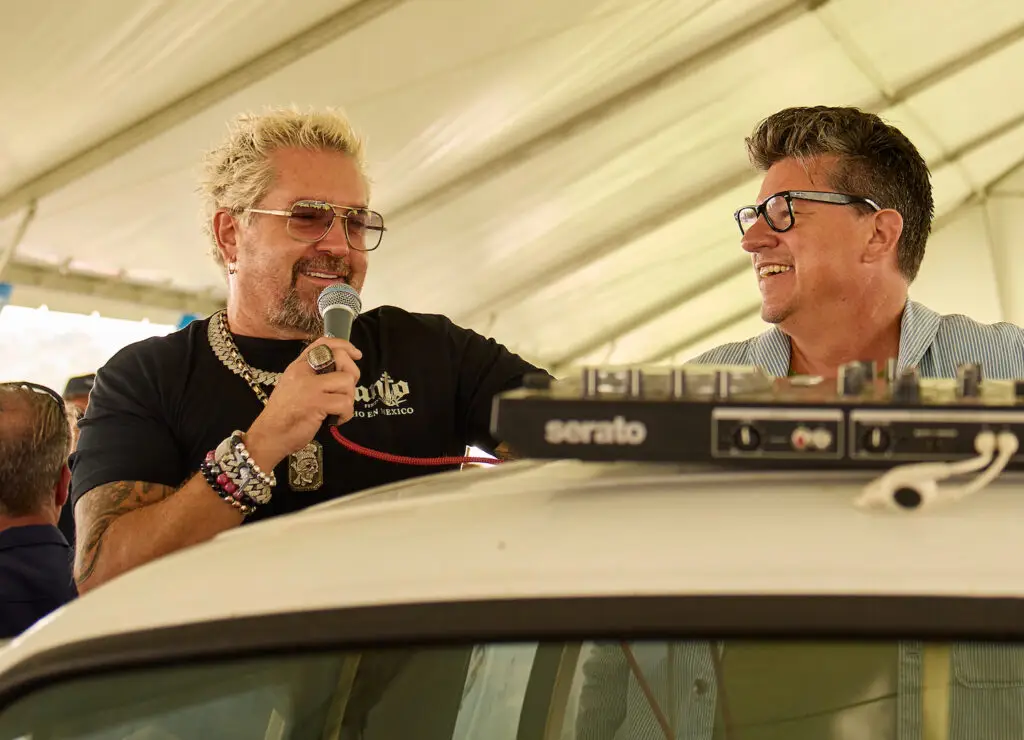Mom was right. Playing with fire is dangerous. And yet as a kid you doused that tennis ball in gasoline, lit it up like a comet, and played kick in the streets of suburbia, anyway. (Or was that just my neighborhood?)
The hottest thing in San Diego’s restaurant scene right now is fire. Braising and sous vide is out. Grilling and roasting are in. Gas stovetops are giving way to wood-burning ovens.
When Brian Malarkey opened Herb & Wood, he and chef de cuisine Shane McIntyre made wood-burning flame the focus. Same thing at Bottega Americano in East Village, Trust Restaurant in Hillcrest, the new Grill at the Lodge at Torrey Pines, and Campfire in Carlsbad.
After decades of advanced cooking techniques, our old Francophillic love of sauces, and our modern-day sous vide addiction, why go back to the flame? Latent caveman impulse? A cook’s version of texting an ex?
“I’m working to build layers of flavoring and getting that perfect caramelization on proteins, vegetables, breads and other ingredients,” says chef Brad Wise at Trust. “Cooking over wood fire allows you to achieve that.”
“I’m excited to once again be working with the wood fire,” says Andrew Bachellier at Campfire. “It’s a truly uncontrollable element that takes tremendous focus and technique, but when harnessed can yield unbelievable layers and complexity of flavor.”
As for the always quotable Malarkey, he explains: “Don’t fear the burn! Black is back! Caramelization is the secret sauce! It’s Francis Mallmann’s world … We’re just burning it up!”
The Mallmann in reference is an Argentinian chef, famous for applying Patagonian, open-fire barbecuing techniques to high-end food. In America, our renewed love for dry heat can be seen in Dallas chef Tim Byre’s 2013 book, Smoke: New Firewood Cooking, which was nominated for a James Beard Award.
Cooking over open flame is advantageous for three main reasons: caramelization, the Maillard reaction, and smoke. All three famously add thousands of flavor compounds to food. They are nature’s MSGs.
First, caramelization, which happens when high heat hits sugars. That’s what gives the crust on pizza or bread its phenomenal flavor. It’s what turns a sharp, raw onion into a sweet, flavorful, soft brown string of sweetness. That’s what makes Herb & Wood’s roasted carrots so tantalizing (see bottom of article for full description).
Second, the Maillard Reaction, named after its discoverer, French scientist Louis Camille Maillard. This is what makes bacon so incredibly good. When an amino acid (the building block of every protein) interacts with a sugar and heat, it creates another few thousand flavor molecules. America’s obsession with bacon is essentially a Maillard obsession, but Mallaird doesn’t translate into funny memes quite as well.
Third, smoke. Anyone who’s eaten a good piece of barbecue brisket (Smitty’s in Lockhart, Texas, remains my favorite) or dad’s charcoal-grilled kielbasa knows that smoke from burning wood (cedar, oak, white pine, applewood, whatever), when used correctly, imparts a rich, ancient flavor to food. Gas flames do not. Bacon is the ultimate proof of what a little smoke can do to the magical combo of protein, salt, fat and sugar.
Evaporation also helps. When you use dry heat to cook a piece of meat, you evaporate some moisture inside, which amplifies its flavor (same thing happens when you “reduce” a sauce). The concept also works with dry-aging—meat loses moisture over time, thus concentrating the flavor molecules (that’s not the whole magic show of dry-aging, which includes breakdown of muscle fibers, but it’s part of it).
Oh, and there’s time. That’s the thing about fire: it’s hot. So it takes much less time to caramelize and cook a protein near a flame than it would, say, if you put it in the sous vide machine at 167 degrees for 26 years. And on a busy Friday night in a restaurant kitchen? Chefs would shank someone for a couple extra minutes on the clock.
In his book Cooked, Michael Pollain suggests that we’re evolutionarily designed to crave foods roasted over fire. After all, fire is the only thing that made certain foods (raw meat, for one) edible for millions of years.
So why not cook everything over an open flame? Why doesn’t every restaurant set stuff on fire?
Because open-flame is a real pain. It’s wild and unpredictable, like presidential candidates.
“Cooking over wood requires a cook to actually cook, to control the heat source the distance of the item from the source for the desired effect,” says Trey Foshee of George’s at the Cove and Galaxy Taco. “That’s one of the reasons I like it besides the obvious flavor advantages.”
Braising a meat in liquid, you can afford to take your eye off of it. Liquid isn’t going to burn. But ignore a dish in a wood-burning oven? It ends up looking like a stocking stuffer for the bad kid in the family. Food gets ruined. Cooks get fired. Owners raise the cost of booze to try and make up for the loss of inventory. Sober customers cry. The restaurant closes, in comes a 7/11 in its place. America becomes a territory of China.
No one wants that.
“It’s challenging to make sure you’re creating the correct burn pattern, or coal circulation,” explains Wise. “It’s especially challenging on a Friday night during service when there’s a full ticket rail and a full grill. You have to watch closely so you aren’t burning too hot or letting the fire die on you. There are also obstacles that mother nature throws your way when using wood for cooking. Each piece is different, each piece burns differently.”
Fire’s comeback, specifically in San Diego, might also be a Mexican thing. The influence of open-fire cooking from Baja has invaded menus across town in the last few years. You get the ash, the smoke, the primitive glee. It tastes like you’re on a nameless beach or ranch south of the border, with stars and the moon instead of push notifications.
Plus, it’s fire. Humans like playing with it. We like to stick our plastic army men in it to see what happens (also maybe an act specific to my neighborhood). Some scientists argue fire is what helped us leapfrog our monkey pals in the evolutionary conga line. People are transfixed by it. We sit around and watch it, despite its lack of Kardashians. There’s a simian excitement to it, a cowboyness.
If there’s one singular thing that chefs really love most in this life, it’s definitely fire and knives and booze. And math.
With all of this open flame in San Diego’s kitchens, you can expect some mistakes. Food will be burned. Food will be cooked on the outside, but slaughterhouse raw in the middle. Maybe poke a fork into it for inspection before you dive in.
But, used right, fire is a lightning fast route to well-tanned food loaded with flavor.
COME ON BABY BITE MY FIRE
Five open-flame dishes to try in San Diego.
Wood-Grilled Trout @ Galaxy Taco. Adobo rub, shishito-watercress salad, and hoja santa.
Fire-Grilled Fingerling Potatoes @ Trust. Served with vinegar whipped cream, butter, and chives.
Roasted Baby Carrots @ Herb & Wood. Tossed in a cashew-sesame dukkah, espellette yogurt, and carrot top pesto.
Monte Cristo @ The Grill at the Lodge at Torrey Pines. Wood-roasted turkey, Applewood ham, gouda on raisin brioche with a strawberry-green pepper jam.
Leeks @ Campfire. With fungi and creamy Tallegio.

PARTNER CONTENT
Fired Up

















